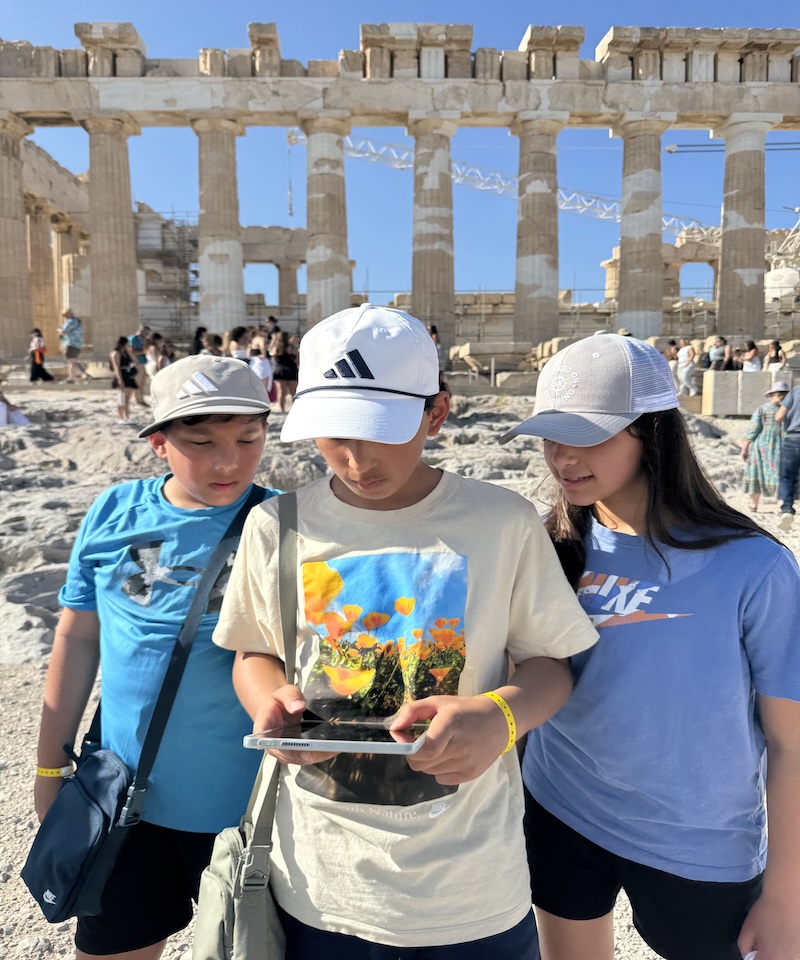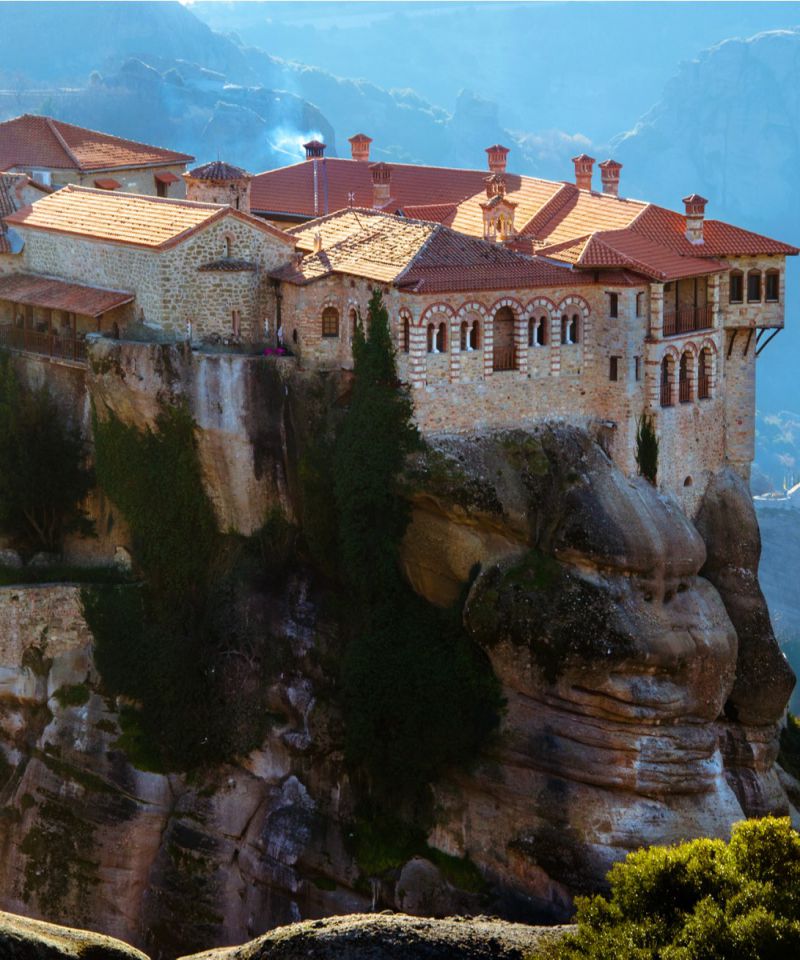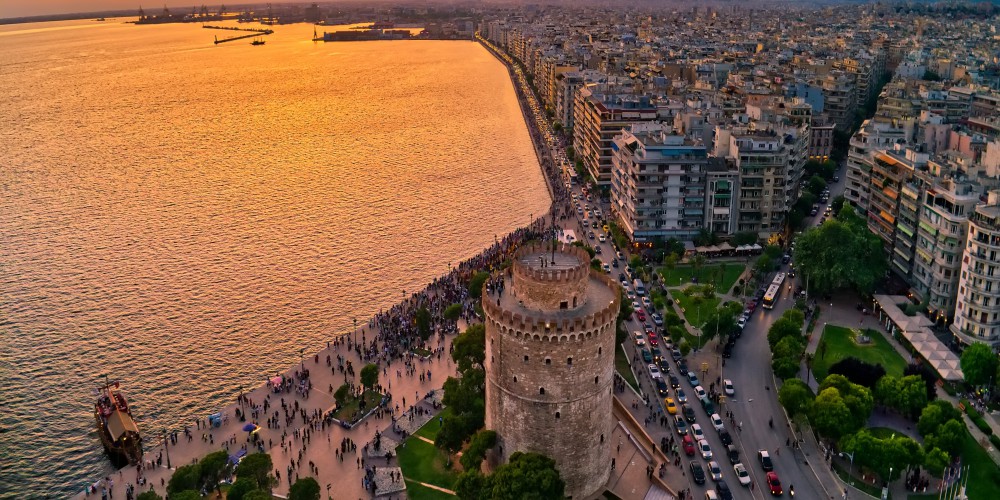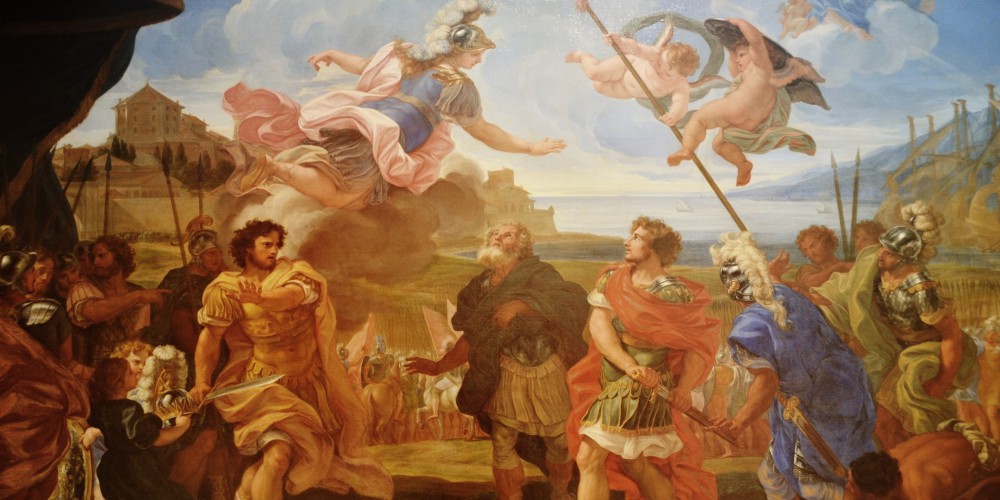
Archaeological Sites in Greece
Key Takeaways
- Archaeological sites in Greece offer a unique window into ancient history and culture.
- Each site tells a different story about Greek religion, sports, government, and daily life.
- Visiting these sites helps support local tourism and preserves important heritage for future generations.
- Many sites are UNESCO World Heritage Sites and are protected by special laws in Greece.

Greece is home to some of the world’s most important archaeological sites from ancient times.
Visitors to Greece can explore places where ancient cities, temples, and palaces once stood. These important ancient sites offer a direct link to the country’s rich history.
These sites tell the story of gods, heroes, and the everyday lives of the people who shaped the ancient world.
People can walk among the ruins of the Acropolis in Athens and visit Delphi, with its sacred grounds.
They can also visit the birthplace of the Olympic Games at Olympia.
Exploring these sites helps visitors understand why Greece is often called the cradle of Western civilization.
The Importance Of Archaeological Sites In Greece

Archaeological sites in Greece are valuable to historians, students, and visitors.
These places offer direct evidence of how people lived, worked, and worshiped in the past.
Key reasons these sites matter:
- They help explain ancient civilizations, such as the Greeks and Romans.
- Scientists and researchers learn about old technologies, art, and daily life.
- These sites preserve important buildings, pottery, statues, and tools.
Some of the most famous sites include the Acropolis in Athens, Delphi, Olympia, and Knossos on Crete.
Each site tells a different story about religion, sports, or government.
|
Name |
Location |
What It Shows |
|---|---|---|
|
Acropolis |
Athens |
Temples, city life |
|
Delphi |
Central Greece |
Religion, oracles |
|
Olympia |
Peloponnesus |
Ancient sports, Olympics |
|
Knossos |
Crete |
Minoan culture, palaces |
These interesting archaeological sites attract people from all over the world.
They bring economic benefits by supporting tourism and local businesses.
Greece protects its archaeological sites with special laws.
This ensures future generations can visit and study them.
The Acropolis Of Athens: The Crown Jewel Of Archaeological Sites In Greece

The Acropolis of Athens - credits: Drozdin Vladimir/Shutterstock.com
The Acropolis stands on a rocky hill above the city of Athens.
Its bright white marble shines in the sun, making it one of Greece’s most famous landmarks.
The main structure on the Acropolis is the Parthenon.
This temple was built for Athena, the city’s patron goddess.
Visitors can also see the Erechtheion with its famous female statues called Caryatids.
The Temple of Athena Nike stands nearby, while within walking distance, one can find the modern Acropolis Museum.
Key Features
|
Site |
Purpose |
Notable Details |
|---|---|---|
|
Parthenon |
Temple for Athena |
Doric columns, sculpted frieze |
|
Erechtheion |
Shrine for multiple gods |
Caryatid porch, asymmetrical design |
|
Temple of Athena Nike |
Celebrates victory |
Small size, Ionic columns |
The ancient Greeks used the Acropolis for religious and defensive reasons.
High walls protected temples and treasures.
Many visitors come to see the Acropolis and learn about ancient Greece.
The site offers views of the surrounding Athens and nearby ruins.
Quick Facts about the Acropolis:
- Built during the 5th century BCE
- An important example of ancient Greek architecture
- UNESCO World Heritage Site
The Acropolis stands as a symbol of ancient Greek culture.
Scholars, students, and tourists from all over the world visit every year.
Delphi: The Ancient Oracle And Sacred Archaeological Site In Greece

Delphi was one of the most important religious sites in ancient Greece.
People knew it for its temple, its oracle, and its location on the slopes of Mount Parnassus.
The site was sacred to the god Apollo.
People from all over Greece visited Delphi to seek advice from the famous oracle.
The high priestess, called the Pythia, spoke Apollo’s words to those who came to ask questions.
Many ancient Greeks saw Delphi as the “center of the world.”
A stone marker called the omphalos marked this spot.
The ancient Greeks believed Apollo spoke through the Pythia, who sat above a crack in the ground.
Delphi was also known for the Pythian Games, a big athletic festival held every four years.
The games honored Apollo and featured sports, music, and poetry competitions.
Archaeologists have found many ruins at Delphi.
These include the Temple of Apollo, a theater, and a stadium.
Here is a brief overview:
|
Major Feature |
Description or Purpose |
|---|---|
|
Temple of Apollo |
Place of worship and prophecy |
|
Omphalos Stone |
Symbol of Delphi’s central spot |
|
Theater |
Performances and ceremonies |
|
Stadium |
Site of the Pythian Games |
Delphi’s treasures, including statues and inscriptions, reveal much about ancient Greek life and beliefs.
Visitors today can tour the archaeological site and see remains of these important features.
Ancient Olympia: Birthplace Of The Olympic Games And Archaeological Marvel In Greece

Ancient Olympia is located in the western part of the Peloponnese.
It is best known as the birthplace of the Olympic Games, which began in 776 BCE.
The site was both a religious and athletic center.
The main attractions at Ancient Olympia include:
- The Temple of Zeus, once home to a huge statue of Zeus, one of the Seven Wonders of the Ancient World.
- The ancient stadium, where footraces and other contests took place.
- The Temple of Hera, the oldest temple at the site.
Key Features Table:
|
Feature |
Details |
|---|---|
|
Location |
Western Peloponnese, Greece |
|
Founded |
Around the 8th century BCE |
|
Most famous for |
First Ancient Olympic Games |
|
Notable Structures |
Temples, stadium, Philippeion, workshop |
People from all over Greece visited Olympia every four years to take part in the games and to honor Zeus.
The games included running, wrestling, boxing, and chariot racing.
Today, Ancient Olympia is an important archaeological site.
Visitors can see the remains of temples, athletic fields, and ancient buildings.
The site also has an impressive museum where artifacts from the area are displayed.
Olympia’s ruins give insight into Greek history, religion, and sports.
The Olympic flame for the modern games is still lit here, showing the lasting influence of this ancient site.
Knossos Palace: Minoan Civilization’s Premier Archaeological Site In Greece

Knossos Palace sits on the island of Crete, near the modern city of Heraklion.
It is the largest Bronze Age archaeological site on the island. The palace served as the center of the Minoan civilisation, which flourished between 2000 and 1400 BCE.
The palace complex had over 1,000 rooms, including storerooms, workshops, living spaces, and courtyards.
Archaeologists discovered features such as running water, drainage systems, and colorful frescoes at Knossos.
Key discoveries at Knossos include:
- The Throne Room with its stone seat
- Vibrant wall paintings of bulls and nature
- Storage jars called pithoi
- Double axes (labrys), which may have held religious meaning
Sir Arthur Evans began excavating the site in 1900. He revealed the layout of the palace and uncovered many artifacts.
|
Fact |
Detail |
|---|---|
|
Location |
Crete, near Heraklion |
|
First Excavation |
1900 by Sir Arthur Evans |
|
Time Period |
ca. 2000–1400 BCE |
|
Notable Finds |
Frescoes, Throne Room, Pithoi |
Knossos connects to the myth of the Labyrinth and the Minotaur.
The site offers important insight into ancient Greek history and architecture.
Visitors can view many of the artifacts in the Heraklion Archaeological Museum.
The palace remains a significant site for studying Minoan culture.
Mycenae: Legendary City Of Agamemnon And Major Archaeological Site In Greece

Mycenae is an ancient city in southern Greece.
It was once a major center of Greek civilization. Archaeologists believe the city started around 1600 BC.
Mycenae is best known from Greek mythology. Legends say King Agamemnon ruled here as the leader of the Greeks in the Trojan War.
Visitors can see the famous Lion Gate, which is the main entrance to the site.
Large stone walls, called 'Cyclopean walls,' still stand today and show the skill of Mycenaean builders.
Important ruins include:
- Grave circles (royal tombs)
- The Treasury of Atreus (a large beehive-shaped tomb)
- Palace ruins
A table of the key features at Mycenae:
|
Feature |
Description |
|---|---|
|
Lion Gate |
Main entrance, features lion relief |
|
Grave Circle A |
Royal tombs with gold masks and artifacts |
|
Treasury of Atreus |
Large tomb, also called "tholos" |
|
Cyclopean Walls |
Massive stone fortification walls |
|
Palace Complex |
Remains of Mycenaean royal residence |
Many important finds from Mycenae, like gold masks and jewelry, are in the National Archaeological Museum of Athens.
UNESCO recognizes Mycenae as a World Heritage Site for its historical and cultural value.
Epidaurus: Healing Sanctuary And Theater Among Greece’s Top Archaeological Sites

Epidaurus sits in the region of Argolis in the eastern Peloponnese.
The site was known for its sanctuary to the god Asclepius, where people came to seek healing.
The main buildings include:
- Temple of Asclepius
- Ancient Theater
- Tholos (a round building)
The Ancient Theater is famous for its perfect acoustics and well-preserved seats.
Builders constructed it in the 4th century BCE, and it could hold up to 14,000 spectators.
People visited Epidaurus for medical treatment. They believed Asclepius could cure illnesses.
The sanctuary offered baths, sleeping rooms, and spaces for offerings.
Key facts about Epidaurus:
|
Feature |
Detail |
|---|---|
|
Location |
Argolis, Greece |
|
Main god |
Asclepius |
|
Theater |
Built in 4th century BCE |
|
Audience size |
About 14,000 seats |
|
UNESCO Status |
World Heritage Site since 1988 |
The ancient theatre of Epidaurus is admired today for its design and peaceful setting.
The theater still hosts modern performances, showing its lasting quality.
Ancient Corinth: Crossroads Of History And Archaeological Sites In Greece

Ancient Corinth was a key city in ancient Greece.
It stood between Athens and Sparta. This position made it an important center for trade and culture.
The archaeological site includes many well-preserved ruins.
Some of the most famous are:
- Temple of Apollo: Built in the 6th century BCE.
- Ancient Agora: The marketplace and social center.
- Fountain of Peirene: A main water source in ancient times.
- Roman Odeon: A small theater for music and events.
|
Site Name |
Date Built |
Main Purpose |
|---|---|---|
|
Temple of Apollo |
6th century BCE |
Religious worship |
|
Ancient Agora |
Various, ancient |
Trade and meetings |
|
Fountain of Peirene |
Classical period |
Water supply |
|
Roman Odeon |
1st century CE |
Entertainment |
Corinth was also famous in Greek myths.
Legends say King Sisyphus lived here and was punished to push a rock uphill forever.
Archaeologists uncovered pottery, coins, and sculptures at the site.
These finds help experts learn how people lived, traded, and worshiped in ancient times.
Corinth’s location connected the Greek mainland with the Peloponnese. This made it a meeting point for merchants, travelers, and armies.
Today, visitors can walk among the ruins and imagine life in a busy ancient city.
Vergina (Aigai): Royal Tombs And Macedonian Archaeological Sites In Greece

Vergina, also known as Aigai, was the first capital of ancient Macedonia.
It is in northern Greece, near the modern town of Vergina.
The site is best known for the Royal Tombs.
Archaeologists believe one of the most important discoveries here is the tomb of King Philip II, the father of Alexander the Great.
Notable Features:
- Ancient palace ruins
- Royal burial mounds (tumuli)
- Wall paintings and artifacts
A Table of Key Discoveries at Vergina:
|
Discovery |
Description |
|---|---|
|
Tomb of Philip II |
Tomb with rich artifacts and gold treasures |
|
Frescoes |
Wall paintings of hunting and scenes of life |
|
Gold Larnax |
Small gold coffin found in a royal tomb |
The Royal Tombs contain many objects such as helmets, weapons, and gold crowns.
These objects reveal information about Macedonian art, burial customs, and daily life.
Archaeologists found many items related to the Macedonian royal family. Some believe the artifacts prove the importance of Aigai during the time of Alexander the Great.
Vergina is a UNESCO World Heritage Site.
It attracts visitors and scholars interested in ancient Greek history.
Delos: Sacred Island And Unique Archaeological Site In Greece

Delos sits as a small island in the Aegean Sea, near Mykonos. In ancient Greece, people viewed it as a sacred place.
Many believed Apollo and Artemis, two famous Greek gods, were born there. Important temples and statues remain on Delos.
The ruins include the Sanctuary of Apollo and the Terrace of the Lions. Old houses with colorful mosaics still stand.
Marble columns and carved stones dot the island. Delos became a busy trading port in ancient times because of its central location.
Merchants and sailors from different lands visited Delos. Today, no one lives on the island, and Greek law protects it.
Key Facts about Delos:
|
Item |
Details |
|---|---|
|
Location |
Aegean Sea, near Mykonos |
|
Founded |
Around 3000 BCE |
|
Famous For |
Birthplace of Apollo and Artemis |
|
UNESCO Status |
World Heritage Site since 1990 |
Visitors walk along ancient streets and public squares. Museums in Greece display many artifacts found on Delos.
Delos offers insights into Greek religion and daily life in ancient times.
Ancient Messene: Hidden Gem Among Archaeological Sites In Greece

Ancient Messene lies in the southwestern part of the Peloponnese. Fewer crowds visit Messene than famous sites like Athens or Delphi.
The city began in the 4th century BCE. Large stone walls still surround much of the site.
Messene played an important role in Greek history after the wars with Sparta.
Main features of Ancient Messene:
|
Feature |
Description |
|---|---|
|
Stadium |
Long, oval field once used for athletic contests |
|
Asklepieion |
Large sanctuary dedicated to the healing god Asklepios |
|
Theater |
Stone seats and stage for ancient plays and gatherings |
|
Agora |
Public square that was the heart of daily city life |
Visitors walk along old streets and see well-preserved ruins. The stadium stands as one of the best examples of ancient Greece.
Thick city walls and watchtowers still rise above the landscape. Messene also has ancient houses, temples, and a fountain house.
Statues and carved stones are scattered throughout the site. Many visitors enjoy the peaceful setting and mountain views.
Messene welcomes the public most days of the year. A small museum displays artifacts found at the site.
Guided tours offer more details about its history and buildings.
Map Of The Top 10 Archaeological Sites In Greece

Greece holds many of the most interesting archaeological sites. Here is a map of ten of the most visited and well-known locations.
These sites help visitors understand the country’s long history.
The following table shows each site and its region:
|
Site |
Region |
|---|---|
|
Acropolis of Athens |
Athens |
|
Delphi |
Central Greece |
|
Olympia |
Peloponnese |
|
Mycenae |
Peloponnese |
|
Epidaurus |
Peloponnese |
|
Knossos |
Crete |
|
Ancient Corinth |
Peloponnese |
|
Vergina (Aigai) |
Macedonia |
|
Delos |
Cyclades |
|
Lindos Acropolis |
Rhodes |
You can find each site on a map by searching for the name and region. Many online maps show these sites with clear labels.
Most places welcome visitors, but some may have limited access or hours. Check local information before visiting.
These sites spread across Greece, located on the mainland and several islands. They offer a broad view of ancient Greek history and culture.
Some sites attract more visitors during certain times of the year.
Tips For Visiting Archaeological Sites In Greece

Many sites in Greece are outdoors, so comfortable walking shoes are important. The ground can be uneven or slippery, especially at places like the Acropolis or Delphi.
Bring essentials like water, sunscreen, hats, and sunglasses. Greek summers are very hot, and shade is sometimes hard to find.
Most sites post signs in both Greek and English. Taking a guided tour can make the experience more interesting.
Guides often share extra facts and stories. Many archaeological sites close early, so check opening hours before planning your day trip.
Some places offer free entry days or reduced prices. Photography is allowed in most sites, but flash and tripods may be restricted.
Always follow posted rules and respect artifacts. Archaeological sites can get crowded, especially in peak travel months.
Visit early in the morning or late in the afternoon for a quieter experience. If possible, combine several local sites in one day trip.
This way, travelers experience more of Greece’s history without spending too much time traveling. Below is a short list of helpful items to bring:
- Comfortable shoes
- Water bottle
- Sunscreen
- Hat and sunglasses
- Map or guidebook
By planning ahead, visitors can make the most out of their trip. Enjoy the unique atmosphere at each site.
Final Thoughts: Why Archaeological Sites In Greece Should Be On Your Bucket List

Greece offers a wide range of archaeological sites. Each location reveals a different part of its long history.
These sites help people understand how past civilizations lived and worked. Many of these places, like the Acropolis or Delphi, hold UNESCO World Heritage status.
The world recognizes their value. Visitors can see ancient art, temples, and theaters up close.
This makes learning about history more real and personal.
Main reasons to visit:
- Learn about famous myths and stories
- See unique ancient buildings
- Find out how people in the past shaped the present
Here is a quick table of what visitors might find at these sites:
|
Site |
Key Feature |
Time Period |
|---|---|---|
|
Acropolis |
Parthenon Temple |
5th century BCE |
|
Delphi |
Oracle Sanctuary |
8th-4th century BCE |
|
Olympia |
Ancient Stadium |
8th century BCE |
|
Knossos |
Minoan Palace |
Bronze Age |
Exploring these places gives a better understanding of how Greece influenced the world. The visits can make history lessons more meaningful.
Each location, both in mainland Greece and the Greek islands, gives unique insights into ancient Greek life, culture, and achievements.
From the Neolithic settlement of Sesklo and exhibits of the Hellenistic Period to Byzantine churches and impressive temples from Eastern Attica to Ancient Nemea and beyond, Greek archaeological sites offer a chance to step back in time and see history almost as it was.
Don't just dream about it—book your next unforgettable journey to Greece with us today and experience the magic for yourself!













